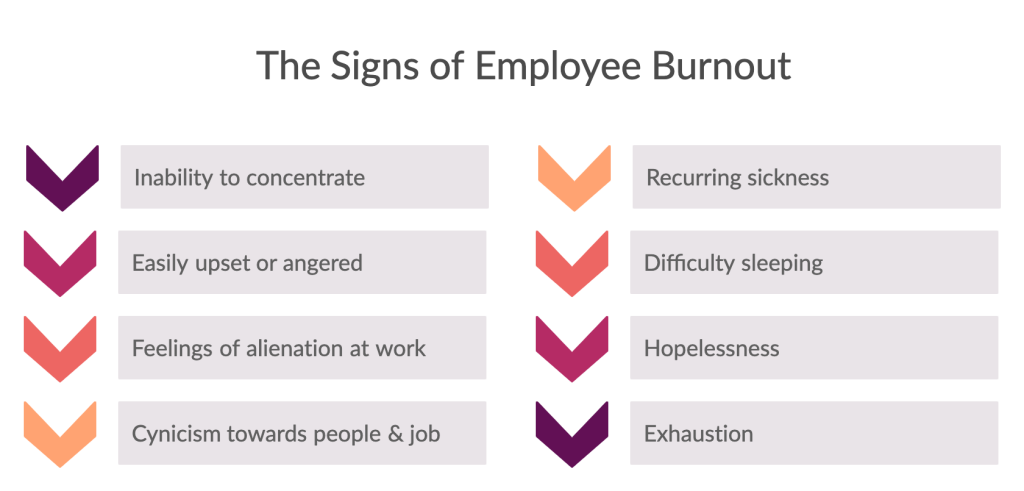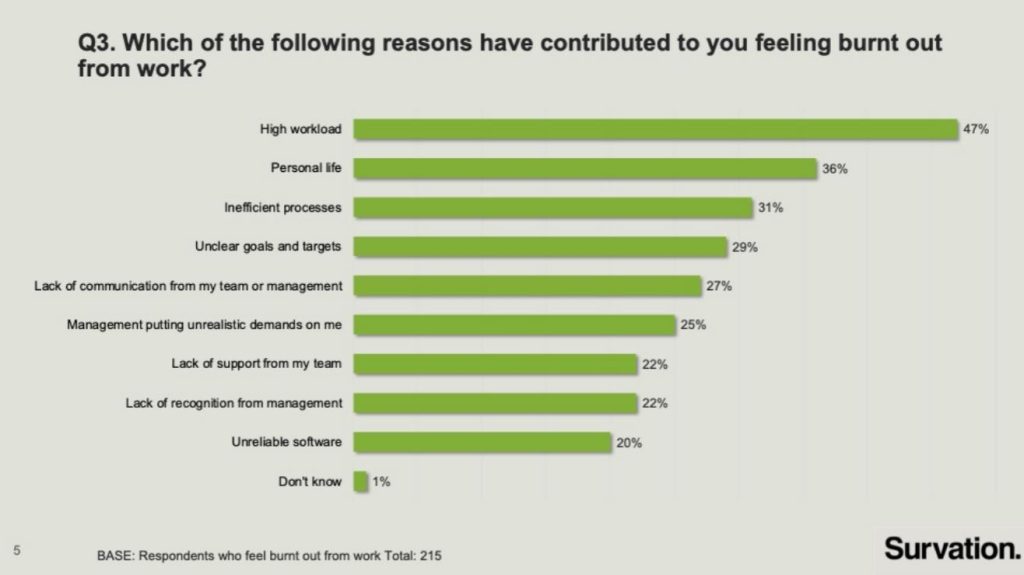
How to combat the Burnout Epidemic
Constantly feeling tired, unfocused, and unmotivated? Irritable, lonely, and dissatisfied at work? Those are common symptoms of burnout, a condition that has rapidly come to affect a large proportion of the global working population.
Burnout is more than just feeling tired though. It is usually associated with an increase in stress and pressure which over time lead to a kind of mental exhaustion. On the individual level it can cause health concerns, as studies have shown burnout to be associated with increased risk of heart disease and clinical depression. Burnout also often leads to absenteeism and lower quality of work, and in leadership positions, to a decrease in quality of leadership. At the organisational level this might also mean negative impacts to office culture and overall company productivity.
Only one or two workers with burnout might not spell disaster yet but according to recent studies from Europe and the US, the percentages of people with burnout floats anywhere between forty and sixty percent. Especially amplified by Covid-19, we are almost looking at a burnout epidemic.
The Numbers on Burnout
Last week I discussed the Quiet Quitting movement, an idea borne out of the globally rising stress and disillusionment many workers are experiencing. Burnout is one of the key causes contributing to the movement – if people are disillusioned by and burnout out from their jobs, they are more likely to entirely disengage from them.

Perhaps unsurprisingly in the current climate, studies show burnout to be scarily common among employees. According to a study Haystack conducted in the UK last year, 83% of software developers feel burnt out from work. 81% of those surveyed also reported their burnout increasing due to Covid-19, often due to increased workloads.
Not quite as sweeping but similarly overwhelming are the results of an Indeed study from 2021. 52% of their respondents reported burnout, 67% of which also reported it getting worse due to the pandemic. Their study also found that burnout is slightly more likely among remote workers, compared to those working on site. A Statista survey found similar results, with most European nations reporting anywhere between 45-66% burnout.
These studies show that anywhere from half to two thirds of the working population is suffering from burnout. It also shows that the conditions of the Covid-19 pandemic – increased workloads, personal stressors, and isolation due to remote working – have significantly impacted our relationship to our work.
Considering the negative consequences burnout, chronic or situational, can have both at the micro and macro level, we need to make employee welfare a priority.
Preventing and Addressing Burnout
But how do you even combat a condition that has so many underlying causes? Part of the challenge lies in understanding what is contributing to the burnout. Is it primarily personal stressors? Or is it caused in the workplace? Are set targets unachievable? Are workloads too high? Expectations unclear? Do employees feel appreciated, and is the value of their contributions underlined to them?
Part of the process is understanding these causes. But the bigger challenge is implementing measures to actively combat these stressors.
Popular suggestions on how to combat burnout usually take the form of self-care and are directed at the employee. Having balanced meals, exercising, and maintaining a regular sleep schedule, and giving yourself time to de-stress and decompress. Other common suggestions include setting work-life boundaries, creating strategies to manage your workload through planners and checklists. But self-care can only take you so far if the input conditions don’t change.

Many of the contributors to burnout that the respondents of the Haystack survey listed, related directly to their jobs. High workloads, inefficient processes, and unclear goals were the main perpetrators. But there was also a noted lack of communication, support, and recognition, as well as unrealistic demands. These are things only managers can really address, usually through modifying they utilise and support your employees.
Makin employees aware of benefit schemes and programmes available to them is one way of providing such support. Another way is to communicate clearly about expectations and targets, and to set measurable and achievable goals. Trying to cut down on unnecessary bureaucracy and overly lengthy meetings, might also be a solution.
In short, addressing burnout must be a two-pronged approach, with both employer and employee taking steps to improve the situation.
Sources
83% of Developers Suffer From Burnout, Haystack Analytics Study Finds
A Common Trend: Europe Also Experiencing High Employee Burnout
Avoiding WFH Employee Burnout | Causes and Preventions
Burnout In Tech: What Causes It And How To Deal With It | by Careerist | Medium
Employee Burnout Report: COVID-19’s Impact and 3 Strategies to Curb It

